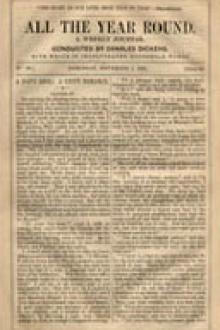Struggles and Triumphs P. T. Barnum (the beginning after the end read novel .TXT) 📖

- Author: P. T. Barnum
Book online «Struggles and Triumphs P. T. Barnum (the beginning after the end read novel .TXT) 📖». Author P. T. Barnum
“Nym Crinkle,” the Dramatic Critic of the New York World, wrote a very entertaining column about the show for that journal, and “Trinculo” copied it in full in the “Amusements Gossip” of the New York Leader. The following is extracted from the article:
Barnum’s Universal Show
Barnum, who long ago beat all creation, is now exhibiting his spoils at the Rink. Animated nature and animated art make a stunning combination, especially when the combination is all in active operation, as it generally is about two o clock in the afternoon and eight o’clock in the evening. Then one can enjoy the howls of the animals, the rush and scurry of the arena, the rattlebang of the band, and the delight of ten thousand people, without stopping to discriminate. It is something for the veteran showman to say he has been able to stir the metropolis with his caravan as other and less indifferent villages are stirred by smaller shows. The combination, as shows are rated, is really an extraordinary one, and when it arrives at an average Western city it doubles the population for them, contributing of its own multitudinous teamsters, tricksters, and stirrers-up about three hundred people, with as many more ravening beasts thrown in.
The first living curiosity that one meets at the Rink is Barnum himself uncaged. He still holds to the notion that it is worth fifty cents to look at him, and one dollar to read his life; and as nearly everybody has looked at him and read his life, we presume the rest of the world agrees with him. Still it is curious to observe how the healthy and hearty world, thronging to see the monkeys and the mermaids, mingle awe with their admiration of the greatest curiosity of all. They are subdued by a sense of the showman’s power. They skirt carefully round the edges of his greatness, so as not to attract too much of his attention, for who could tell at what moment, if he so chose, he would exhibit them. We say the healthy and hearty world, for of course the unhealthy and deformed world, which we all know was made to be exhibited, throngs as of old in supplicating procession after him. Three-legged women and four-legged men, and double-headed children may be seen at all hours congregating on the Third avenue in the vicinity of the Rink, seeking audience of the great showman. Indeed, the observant traveller on this great thoroughfare will know, hours before he gets to the Rink, that he is approaching Barnum, by the strange monstrosities, woolly horses, Albino children, and living skeletons that will be observed wending their way from all parts of the world to the great show in hope of getting engagements. Of course, all this adds to the excitement and interest of the eager multitude. But the animals and curiosities inside constitute the real attraction to the public; and a very fine collection of animals it is. The eight or ten royal Abyssinian and Babylonian lions roar less like sucking doves than any that have had their jaws stretched among us since Van Amburgh’s time. As for the rhinoceros, he deserves especial attention, because, as the card on his cage informs us, he is the unicorn of Scripture. But he doesn’t look a bit like the agile fellow that fought for the crown on his hind legs, (ah, he was an artist,) for he eats too much hay, and nothing can be more absurd and contrary to the revolutionary character of the unicorn dear to heraldry than this ironclad monster eating hay with the demureness of a cow. Still there is danger in his cage, the keeper informs us, and he ought to know, for he probably lived there at some time with him in order to find him out. And he further assures us that the reason Mr. Barnum employs him to take care of the beast is that he is an old sailor, nobody else being able to go round his horn. Time, however would not suffice to relate the wonders of the yak and guayga and the wart hog, none of which are popular pets, nor to tell of the infinite variety of the feline tribe, from felis leo himself to the tiniest cougar. This collection of animals makes what is called the Zoological Garden, a distinct apartment of the show. There is a collection of camels—about forty—and several elephants, eating peanuts with singularly disproportioned taste, at the east end, and here, we observe, is the menagerie. The camels, each with his hump tastefully covered with a camel’s hair shawl, wait with meek patience for the ringmaster to call them, and they all slide out on their cushioned feet like dusty spectres. It would be well to visit the collection of wild animals after this, and then inspect the exhibition of animated nature, reserving the caravan till the last. But the conscientious visitor has the hippodrome, the hippotheatron, the circus, the arena and the ring to inspect, and unless





Comments (0)